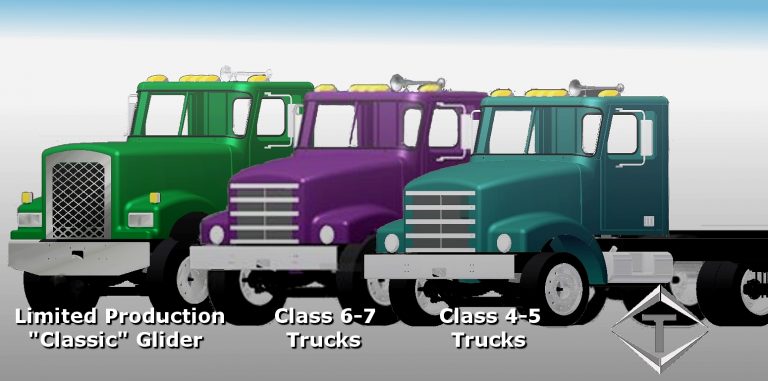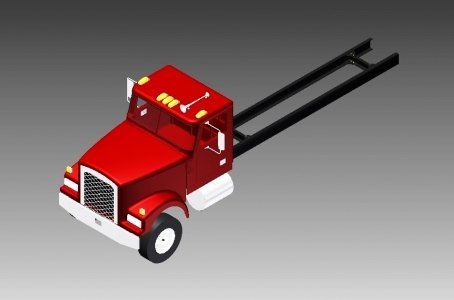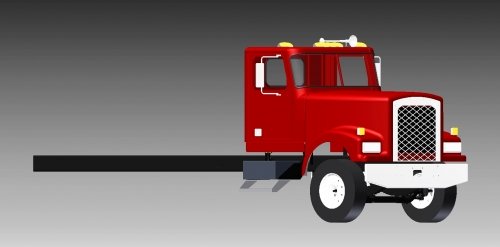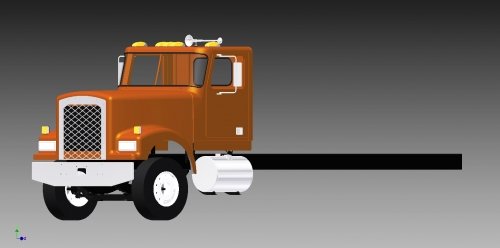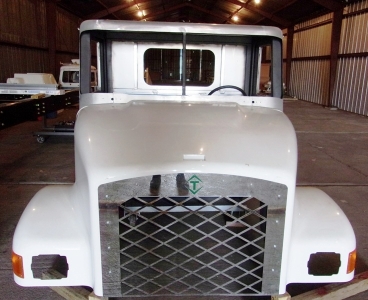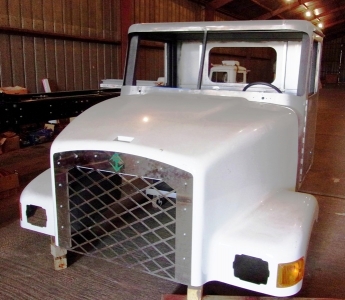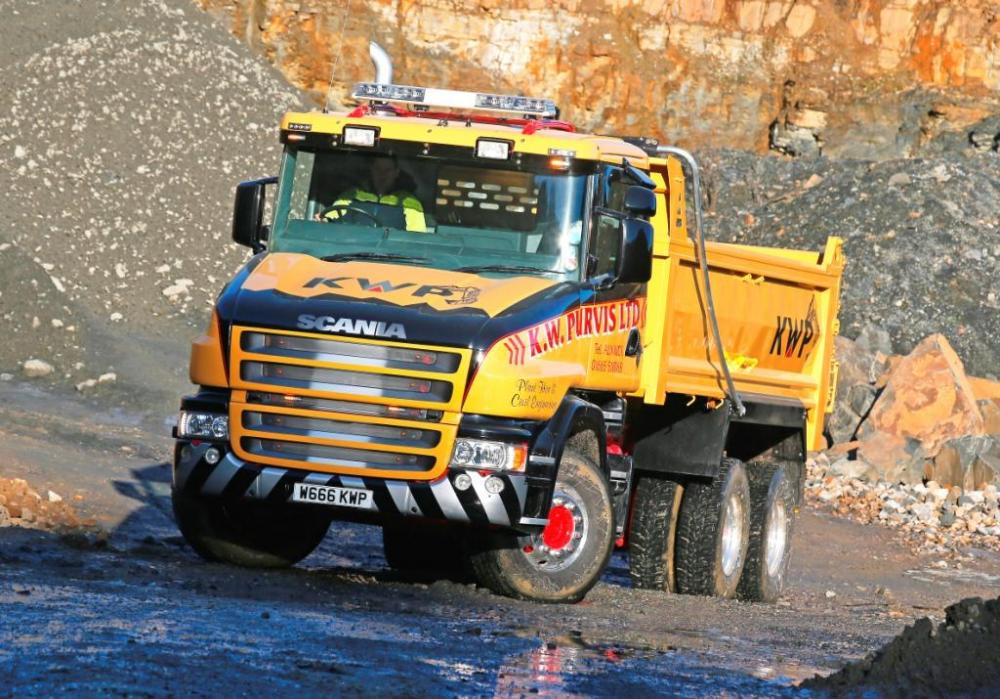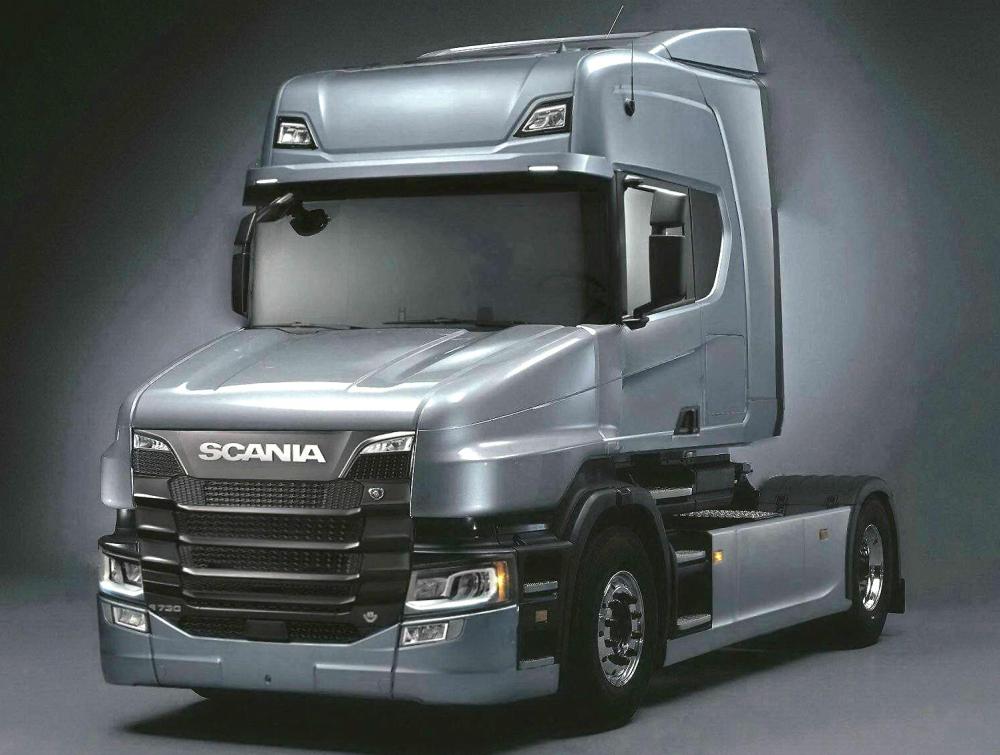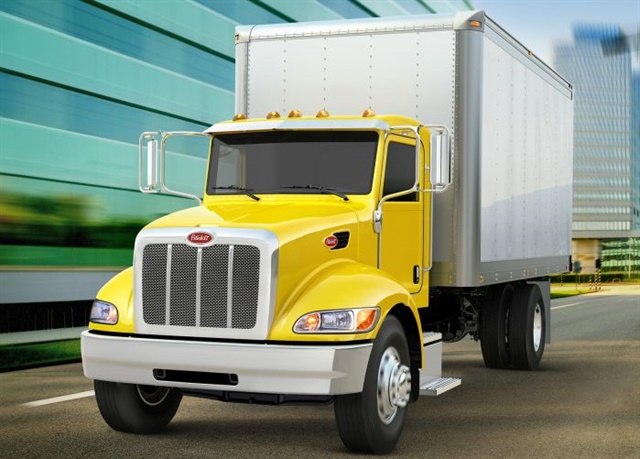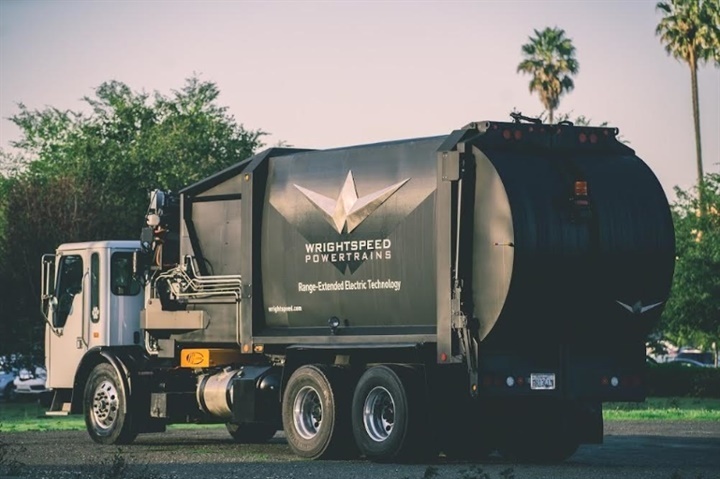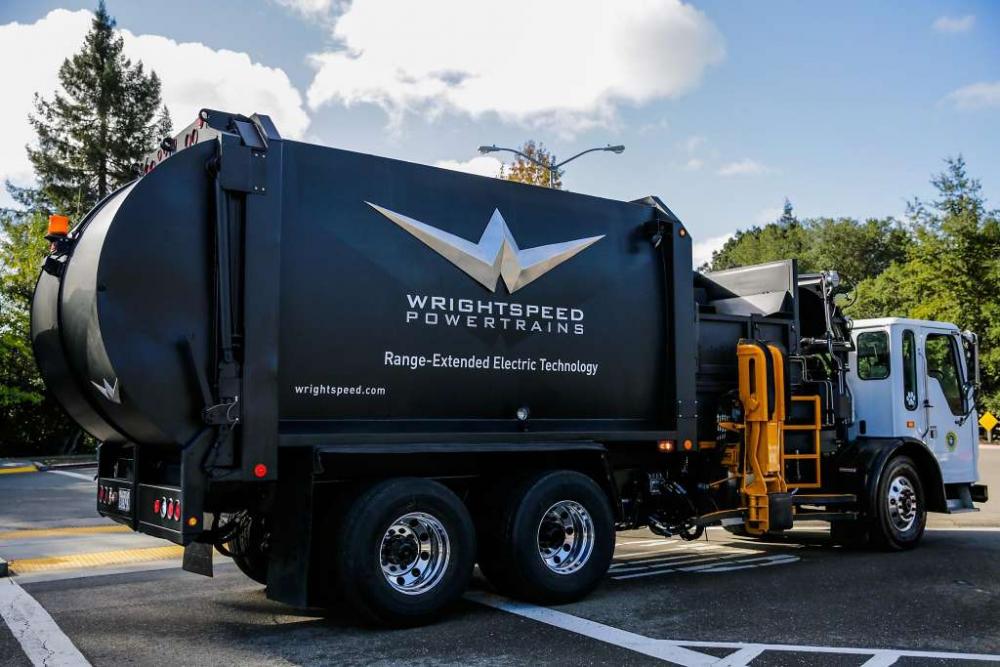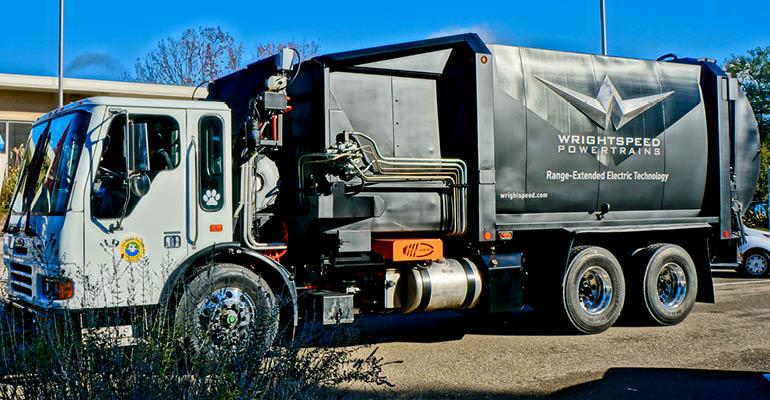
kscarbel2
Moderator-
Posts
18,886 -
Joined
-
Days Won
114
Content Type
Profiles
Forums
Gallery
Events
Blogs
BMT Wiki
Collections
Store
Everything posted by kscarbel2
-
"People should and do trust me" - Hillary Clinton
kscarbel2 replied to kscarbel2's topic in Odds and Ends
FBI examining fake documents targeting Clinton campaign Reuters / November 3, 2016 The FBI and U.S. intelligence agencies are examining faked documents aimed at discrediting the Hillary Clinton campaign as part of a broader investigation into what U.S. officials believe has been an attempt by Russia to disrupt the presidential election. U.S. Senator Tom Carper, a Democrat on the Senate Homeland Security Committee, has referred one of the documents to the FBI for investigation on the grounds that his name and stationery were forged to appear authentic. In the letter identified as fake, Carper is quoted as writing to Clinton, “We will not let you lose this election.” The fake Carper letter is one of several documents presented to the FBI and the U.S. Department of Justice for review in recent weeks. As part of an investigation into suspected Russian hacking, FBI investigators have also asked Democratic Party officials to provide copies of other suspected faked documents that have been circulating along with emails and other legitimate documents taken in the hack. An FBI spokesman said the agency was “in receipt of a complaint about an alleged fake letter” related to the election. The FBI is also examining other fake documents that recently surfaced. U.S. intelligence officials have warned privately that a campaign they believe is backed by the Russian government to undermine the credibility of the U.S. presidential election could move beyond the hacking of Democratic Party email systems. That could include posting fictional evidence of voter fraud or other disinformation in the run-up to voting on Nov. 8, U.S. officials have said. Russian officials deny any such effort. In addition to the Carper letter, the FBI has also reviewed a seven-page electronic document that carries the logos of Democratic pollster Joel Benenson’s firm, the Benenson Strategy Group, and the Clinton Foundation. The document, identified as a fake by the Clinton campaign, claims poll ratings had plunged for Clinton and called for “severe strategy changes for November” that could include “staged civil unrest” and “radiological attack” with dirty bombs to disrupt the vote. Like the Carper letter, it was unclear where the fraudulent document had originated or how it had begun to circulate. -
Bloomberg / November 4, 2016 Takata Corp. shares were suspended Friday after the Nikkei newspaper reported the air-bag maker is preparing for a possible bankruptcy filing in the U.S. The shares will be suspended from 8:20 a.m. Japan time, according to the Japan Exchange Group. A bankruptcy filing by TK Holdings, Takata’s U.S. unit, could help the Tokyo-based company find a buyer and continue supplying parts while seeking an out-of-court reorganization.
-
Looking back into history, viruses have devastated global regions and entire species. When a species can no longer successfully procreate.......... ------------------------------------------------------------------------------------------ Zika causes a unique syndrome of devastating birth defects The Washington Post / November 3, 2016 The birth defects caused by Zika have been described in heartbreaking detail as the virus has spread to more than 45 countries, infecting hundreds of thousands of people, including tens of thousands of pregnant women. Now researchers have concluded that a Zika infection during pregnancy is linked to a distinct pattern of birth defects that they are officially calling congenital Zika syndrome. In a report released Thursday in JAMA Pediatrics, researchers from the Centers for Disease Control and Prevention describe five types of birth defects that are either unique to Zika or occur rarely with other infections during pregnancy: Severe microcephaly (abnormally small head size) with partly collapsed skull. Decreased brain tissue with a specific pattern of calcium deposits indicating brain damage. Damage to the back of the eye with a specific pattern of scarring and increased pigment. Joints with limited range of motion, such as clubfoot. Too much muscle tone, restricting movement soon after birth. Researchers at the CDC, along with colleagues elsewhere in the United States and Brazil, analyzed publicly available reports about defects among infants and fetuses whose mothers had either confirmed or presumed infection with Zika virus during pregnancy. Most of the clinical descriptions of Zika-affected infants are from Brazil, the heart of the epidemic. The most common timing of infection that led to birth defects is late first and early second trimester, although third-trimester infections were also reported among infants with birth defects. The five features described in the report are an initial list of clinical findings. It’s becoming increasingly clear, however, that the full spectrum of health problems caused by a Zika infection won’t be known for months and even years after birth. At a conference in September on Zika’s effect on children, sponsored by the National Institute of Child Health and Human Development, researchers described an array of problems associated with Zika exposure beyond microcephaly, mostly stemming from the virus’s harm to the nervous system. Children born to Zika-infected mothers will need to be regularly monitored because some problems don't show up until months later, said Catherine Spong, an obstetrician-gynecologist and the institute’s acting director. “Although the severe cases are teaching us a lot, the impact is likely much more broad, and these impacts, although less striking, may be much more widespread and may need more monitoring and interventions,” she said. Researchers say the purpose of the latest report is to describe what is known about the congenital syndrome. The description is intended to help health-care providers “better recognize the pattern of birth defects associated with congenital Zika virus infection,” said Cynthia Moore, a clinical geneticist and birth-defects expert for the CDC and lead author of the report. Doing that will help providers evaluate and coordinate care for affected babies and their families, she said. At least 1,005 pregnant women have Zika infections in all 50 states and the District of Columbia; 25 U.S. infants have been born with Zika-related birth defects and an additional five pregnancies are known to have resulted in miscarriage, stillbirths or terminations with evidence of birth defects. Video - https://www.washingtonpost.com/news/to-your-health/wp/2016/11/03/congenital-zika-syndrome-is-the-new-name-for-a-group-of-devastating-birth-defects/?hpid=hp_hp-more-top-stories_zika-1150a%3Ahomepage%2Fstory
-
FBI under scrutiny amid speculation over Trump's Russian ties France 24 / November 3, 2016 Speculation has mounted in recent days over what the FBI knows about Donald Trump’s ties to Russia, from a preliminary FBI probe into a former Trump adviser to an ex-spy's claims that the Kremlin sought to cultivate Trump over several years. Democratic Senator Harry Reid of Nevada in an angry letter on Sunday accusing the FBI director of choosing not to reveal that his agency had “explosive” information on Trump’s ties to Russia. “In my communications with you and other top officials in the national security community, it has become clear [???] that you possess explosive information about close ties and coordination between Donald Trump, his top advisers, and the Russian government – a foreign interest openly hostile to the United States, which Trump praises at every opportunity,” Reid wrote. “The public has a right to know this information. I wrote to you months ago calling for this information to be released to the public." Reid’s allegations prompted a flurry of speculation as to what the FBI might know as well as accusations that it may be cherry-picking what information it releases to the public for the purposes of influencing the election. Manafort resurfaces Citing law enforcement and intelligence sources, NBC News reported on Monday that the FBI had launched a preliminary inquiry into the overseas business interests of Paul Manafort, Trump's former campaign chief. Manafort told NBC that "none of it is true... There's no investigation going on by the FBI that I'm aware of." Manafort also denied having any ties to Russian President Vladimir Putin or the Kremlin. "This is all political propaganda, meant to deflect," he said. What is known is that Manafort’s firm acted as a political adviser to Ukraine’s pro-Kremlin prime minister Viktor Yanukovych, helping his party win the largest bloc in 2006 parliamentary elections and in 2007 securing him a second term as premier. Handwritten, “black” ledgers appeared to show that Manafort was paid $12.7 million in cash by Yanukovych’s party between 2007 and 2012, the New York Times reported in August. The payments, which were revealed by Ukraine’s new National Anti-Corruption Bureau, have been denied by Manafort’s lawyer. The anti-corruption bureau, which receives funding from both the United States and the European Union, has an evidence-sharing agreement with the FBI. It said that Manafort’s name appears 22 times in the black ledger over a five-year period. Officials in the Cayman Islands are also investigating Manafort’s business dealings, including his involvement with off-shore shell companies set up to purchase Russian and Ukrainian assets. Manafort and his partners set up a Cayman Islands private equity company in 2007 that listed a firm owned by Russian oligarch and Putin ally Oleg Deripaska as an investor, the Times reported, citing court filings. Deripaska invested millions into the fund, which purchased a cable television station in Odessa. The deal eventually collapsed in acrimony, with Deripaska suing Manafort in a court case that is still pending. But it appeared to be a bridge too far for the Trump campaign when emails surfaced showing that Manafort deputy Rick Gates – who also worked on the Trump campaign – was involved in a lobbying project for Ukraine's then ruling party, which included setting up “meetings between a top Ukrainian official and senators and congressmen on influential committees”, the AP reported. The efforts included attempts to sway US public opinion in favour of Ukraine's pro-Russian government at the time. But neither Manafort nor Gates registered that they were working as foreign agents, as required under federal law. Manafort left the Trump campaign in August, just days after the reports came to light. Russia attempts to woo Trump? Other media reports allege a more sinister link between Trump and Russian interests. Also on Monday, left-leaning magazine Mother Jones reported that a former senior Western intelligence officer who specialises in Russian counterintelligence told the FBI that the Kremlin has for several years sought to cultivate Trump, citing recent communications with Russian sources. (A senior US official familiar with the former officer confirmed to Mother Jones that he is a credible source.) The revelation prompted the FBI to request more information. The former intelligence officer, who asked not to be identified and who now works for a US firm providing corporate clients with information on Russia, was asked to research Trump's overseas interests, including those in Russia. The inquiry was part of an opposition research project initially financed by a Republican client critical of Trump. "It started off as a fairly general inquiry," the former officer told David Corn, Washington bureau chief for Mother Jones. But upon digging deeper, he found that "there was an established exchange of information between the Trump campaign and the Kremlin of mutual benefit". "Russian regime has been cultivating, supporting and assisting TRUMP for at least 5 years,” said the former officer’s first memo, seen by Mother Jones. “Aim, endorsed by PUTIN, has been to encourage splits and divisions in western alliance [emphasis in original]." Trump "and his inner circle have accepted a regular flow of intelligence from the Kremlin, including on his Democratic and other political rivals", the memo continued. It went on to state that Russian intelligence had "compromised" the real estate mogul during his visits to Moscow and could attempt to "blackmail” him. The response from the FBI was "shock and horror", the ex-official told Mother Jones. “In August the FBI asked him for all information in his possession and for him to explain how the material had been gathered and to identify his sources,” Corn writes. “The former spy forwarded to the bureau several memos – some of which referred to members of Trump's inner circle.” The official continued to share additional information with the FBI. "It's quite clear there was or is a pretty substantial inquiry going on," he said. "This is something of huge significance, way above party politics. I think [Trump's] own party should be aware of this stuff as well." Trump’s campaign did not respond to a Mother Jones request for comment on the new allegations. But in the past Trump has unequivocally denied receiving any political help from Moscow. "I have nothing to do with Russia," he told CBS in July. Business interests The billionaire has promoted Trump real estate in Russia and other former Soviet bloc states, however, and several analysts have observed that his foreign business dealings might create conflicts of interest if he is elected. For one, the Western sanctions levied on Russia for its role in Ukraine might prove to be at odds with Trump’s own financial interests. “Will I sell condos to Russians on occasion? Probably. I mean I do that. I have a lot of condos. I do that. But I have no relationship to Russia whatsoever," Trump told ABC’s George Stephanopoulos. Trump has said he will not take part in business decisions if he becomes president and will instead leave day-to-day operations to his children in a blind trust. But Richard Painter, a law professor who was an ethics adviser to former president George W. Bush, said this arrangement might not go far enough. “I don’t see how you have a blind trust when you know what’s in the blind trust,” Painter told ABC News. “The appearance is that a foreign government or other foreign organization has influence over the president of the United States through financial dealings with his family, and that would be unacceptable.” Trump has repeatedly denied having financial interests inside Russia. “For the record, I have ZERO investments in Russia,” he wrote on Twitter in July. For the record, I have ZERO investments in Russia. — Donald J. Trump (@realDonaldTrump) 26 juillet 2016 Trump may not hold assets in Russia, but one of his sons has spoken publicly about their lucrative business dealings with Russian clients both in the United States and abroad. "[In] terms of high-end product influx into the US, Russians make up a pretty disproportionate cross-section of a lot of our assets; say in Dubai, and certainly with our project in SoHo and anywhere in New York,” Donald Trump Jr. said in 2008, speaking at a real estate conference in New York. “We see a lot of money pouring in from Russia.” It remains difficult to determine whether Trump holds any Russian assets since he has refused to release his tax returns, breaking with a tradition followed by every US presidential candidate since 1976. Russian hacks Speaking to lawmakers on September 28, FBI Director Comey said the FBI was trying to figure out "just what mischief is Russia up to in connection with our election". But when on October 7 the US government formally accused Russia of hacking political targets – saying the hacks were specifically "intended to interfere with the US election process" – Comey asked that the FBI’s name be kept off the official statement, according to several people involved in the discussions. A former bureau official told CNBC this week that Comey did not want his bureau to be involved in accusing Russia of interfering in the vote so close to Election Day despite the FBI's role in the investigation. In the end, a statement was jointly issued by the Department of Homeland Security and the director of national intelligence, saying that the US was "confident" the Russian government “directed the recent compromises of e-mails from US persons and institutions”. “We believe, based on the scope and sensitivity of these efforts, that only Russia’s senior-most officials could have authorized these activities,” the statement said. Comey agreed that a foreign power was trying to affect the presidential vote. "He believed it to be true, but was against putting it out before the election," the ex-official said. Comey’s concern about the timing of the hacking revelations ahead of the November 8 vote has left many confused, considering his decision to notify Congress last week that the FBI was planning to review newly discovered emails on a laptop seized from the home of Huma Abedin, a top Clinton aide. 'Deep concern' to voters Despite Monday’s revelation that Manafort was once again the target of a preliminary FBI inquiry, the New York Times reported that same day that the FBI had found no evidence "that would link him or anyone else in his business or political circle directly to Russia’s election operations”. But as the paper itself notes, “The FBI’s inquiries into Russia’s possible role continue” with respect to the Clinton campaign hacks. The paper said that “even the hacking into Democratic emails, FBI and intelligence officials now believe was aimed at disrupting the presidential election rather than electing Mr. Trump”. But several US politicians have said that more should be done to separate fact from fiction with respect to the allegations. Representative Adam Schiff of California, the ranking Democrat on the House Intelligence Committee, told NBC that he could not discuss Senate Majority Leader Reid's assertions that the FBI was sitting on “explosive” information of Russia’s involvement with Trump. But he would say the allegations should worry the US electorate. "Americans have every right to be concerned about what they see in terms of Trump advisers and their closeness with the Kremlin, Trump's policies vis-a-vis Russia, Trump's potential financial interest – all of those things ought to be of deep concern to voters." Democratic Representative Gregory W. Meeks of New York has suggested that the FBI needs to be more forthcoming about what it is or is not investigating with regard to Trump. “You do not hear the [FBI] director talking about any other investigation he is involved in,” Meeks told the New York Times after Comey’s letter about the new emails was made public. “Is he investigating the Trump Foundation? Is he looking into the Russians hacking into all of our emails? Is he looking into and deciding what is going on with regards to other allegations of the Trump Organization?” President Barack Obama has refrained from criticising Comey for his announcement but even he eventually weighed in on the controversy swirling around the FBI chief, saying US investigations should not “operate on innuendo”. “[There] is a norm that when there are investigations, we don’t operate on innuendo, we don’t operate on incomplete information, we don’t operate on leaks,” Obama said. “We operate based on concrete decisions that are made.”
-
The adventures of flawed national healthcare
kscarbel2 replied to kscarbel2's topic in Odds and Ends
If you believe that the government is in bed with the health care and pharmaceutical industries, than you know that nuggets like this are probably thrown out every couple of years for appearance’s sake. ------------------------------------------------------------------------------------------ Generic-Drug Firms Face Possible Collusion Charges The Wall Street Journal / November 3, 2016 U.S. Justice Department has sent subpoenas to several drugmakers and to some individual executives Federal prosecutors, after a lengthy probe, are nearing possible criminal charges for price-collusion in the generic-drug industry. The U.S. Justice Department could begin to bring cases before year’s end, though the timing of any potential enforcement actions remains uncertain. The specific companies that are a focus of the investigation weren’t immediately known. However, the Justice Department has sent subpoenas to several manufacturers of generic drugs and to some individual executives, seeking information about product pricing and “communications with competitors,” according to the companies’ filings with the Securities and Exchange Commission over the past two years. Those companies include Teva Pharmaceutical Industries Ltd.; Mylan NV; Dr. Reddy’s Laboratories; Taro Pharmaceuticals; Endo International PLC; and Actavis, which Allergan PLC recently sold to Teva. The developments sent shares of generic drug makers tumbling. Endo fell 20%, while Teva declined 9.5%, and Mylan dropped 6.9%. In a separate probe, a group of state attorneys general are investigating generic-drug companies for price-fixing. That investigation, which is a civil matter, is being led by Connecticut Attorney General George Jepsen. That probe began in 2014 and includes smaller drug companies as well as some of the largest U.S. drug manufacturers and the U.S.-based subsidiaries of foreign companies. The pricing practices of pharmaceutical companies that make costly branded drugs have attracted significant public outcry over the past year, spurring congressional hearings and regulatory probes. But the pricing of generic drugs, which generally cost much less than brand-name drugs, has drawn much less scrutiny. However, prices for some generic drugs have risen sharply in recent years. The Government Accountability Office in August issued a report finding that more than 300 of 1,441 established generic drugs analyzed had at least one extraordinary price increase of 100% or more between 2010 and 2015. Price collusion, if proven, could undermine a key goal in the rules that fostered the creation of generic drugs: to reduce spending. The exact nature of the federal investigation isn’t fully clear, but some companies have identified specific drugs of interest to the government. Endo disclosed in an SEC filing that the Justice Department sought information from its Par unit about at least two generic drugs: digoxin, a heart drug; and doxycycline, an antibiotic. Mylan said the subpoena it received sought information about its generic doxycycline product. Many generic drugs are produced by more than one manufacturer. The GAO report said both digoxin and doxycycline had significant price increases since 2012, though it didn’t specify the manufacturers. Some labor-union health-benefit funds and other drug purchasers have filed lawsuits in state and federal courts against some of the drugmakers, including Mylan and Endo, alleging that they conspired to fix the prices of digoxin and doxycycline. The plaintiffs allege that between 2012 and 2014, the average market price for digoxin and doxycycline increased by 884% and 8,281%, respectively, according to a court document. Mylan said in an SEC filing it intends to defend itself against the suits. Agreements among companies to set prices or to divide up markets have long been illegal under federal antitrust law. Prosecutors have generally found it difficult to win price collusion cases, because of the high barrier that courts have established to prove a conspiracy among different companies, according to Herbert Hovenkamp, a University of Iowa Law School professor and author of the “Antitrust Law” textbook. “Courts are clear” that there must be evidence of an agreement among companies to follow each other on prices, such as a written document or telephone conversation or a meeting, Mr. Hovenkamp said. Most criminal price-fixing cases end up settling, rather than going to trial. In recent years, dozens of auto-parts makers have agreed to plead guilty to fixing prices on new car parts, and have paid nearly $2.9 billion in criminal fines. Wells Fargo analyst David Maris said in a research note that the news of the investigation “could add a severe overhang to the sector that may last well past the presidential election and into the new year.” -
BC Mack can. He's our UK diesel expert, and a fountain of knowledge.
-
The adventures of flawed national healthcare
kscarbel2 replied to kscarbel2's topic in Odds and Ends
Where Obamacare Is Really Headed: A 'Robust' Public Option The National Interest / November 2, 2016 Democrats’ new strategy to control Obamacare costs will just make things worse. An average 25 percent jump in health-insurance premiums sold on Obamacare exchanges has administration officials and their congressional allies scrambling to find some rapid remedy to control costs. Emerging as the liberals’ leading policy prescription is a “robust public option”—an option roundly rejected during the 2010 debate. President Obama, presidential candidate Hillary Clinton, Health and Human Services Secretary Sylvia Burwell, Senate minority leader Harry Reid and thirty-two Democratic senators—the top political stars in America’s “progressive” constellation—all strongly endorse this proposal. They say it will enhance market competition and control costs. But . . . it’s got to be robust. When progressives say they want to make the public option “robust,” what they really mean is they want to endow it with special advantages. To be blunt, they want to make sure that the “level playing field” between the public option and private plans is, well, tilted against private plans. One way to do this, as congressional liberals proposed in 2009, is to base public-option payment rates for doctors, hospitals and other medical professionals at Medicare levels—well below the reimbursement rates that private health plans maintain in the provider contracts. Paying physicians less would enable the public option to offer lower premiums, undercutting the market share of private health plans. The administration and its allies promise that this advantage will enhance competition. In fact, it would reduce competition. More and more private health plans would continue to exit the market, joining the major exodus that started during the first three years of Obamacare’s implementation. A recent Heritage Foundation analysis of the exchanges found that, next year, one-third of all U.S. counties will have only one insurer (“mini single-payer plans”); another third will have just two insurers. Essentially, Obamacare has consolidated the exchange market to the point that only a few “big players” are left to administer the plans. But advocates of more complete government control over the health care sector of the economy, think they have a surefire way to secure that control: raw coercion. Here, they have a couple of options. For example, government officials could change the Medicare law and make physicians’ participation in the new public option a legal condition of their right to practice in the giant Medicare program. In certain states, like Florida, giving up Medicare practice is financially prohibitive for physicians. On the supply side, coercing physicians and medical professionals to follow government reimbursement rules is standard political practice. One need look no further than the 2,400-page regulation issued to enforce the Medicare “payment reform” enacted in Medicare Access and CHIP Reauthorization Act of 2015 (MACRA). Alternatively, in the big blue states ruled by liberal governors and state legislators, policymakers could tie state medical licensure to their physicians’ participation in Washington’s new “robust public option.” On the demand side, Obamacare’s penalty for individuals who refuse to buy a government-approved health plan can be “upgraded” and more rigorously enforced. This year, the annual penalty for individuals going without coverage is $695 or 2.5 percent of family income, whichever is greater. For 2017, the penalty is indexed to inflation. Even so, just in terms of dollars and cents, paying the penalty is a lot cheaper than shelling out a bigger chunk of personal income to buy an expensive health plan with big deductibles. For 2017, deductibles in the lowest-cost “bronze” plans average over $6,000 for a single person and $12,393 for family coverage. Moreover, under current law established long before Obamacare, access to hospital emergency medical care is legally available regardless of one’s financial capacity to pay for it. Not surprisingly, the biggest exchange enrollment challenge is capture younger, healthier customers—those annoying millennials who don’t think buying an Obamacare plan is worth their time, effort or money. Frustrated liberals may regard them as spoiled brats. But their truancy—not ponying up their “fair share” to subsidize older and sicker enrollees—is another reflection of Obamacare’s design flaws: the restrictive age-rating rules overprice coverage for the young, and the standardized-coverage insurance package just doesn’t offer them value for the money. This flight of the young and the healthy from the Obamacare exchanges is a contributing factor to sharply rising exchange premiums—a major embarrassment to the president who promised, repeatedly, to cut health insurance costs. Obamacare’s champions, in academia and elsewhere, have another simple statutory answer: just toughen up the individual mandate’s “tax penalty”; hit the scofflaws harder. That is indeed the latest prescription endorsed by none other than Professor Jonathan Gruber of MIT, the so-called “architect” of Obamacare. A public option with artificially low payment rates, reinforced by increased government coercion and tougher mandates on doctors—that’s a stiff policy cocktail. Imagine the hangover. Private health plans would be unable to compete with the artificially low payment rates of the public option; more and more enrollees would migrate to the public option, leading more and more private plans to withdraw due to declining market share. Voila! A government monopoly. But how to secure financial stability for the robust public option on the way to market domination and control? Another painful prescription: force taxpayers to assume financial risk for the public plan. That’s precisely what House Democrats proposed in their initial version of the Affordable Care Act unveiled in June of 2009. Imagine. A “robust public option,” enrolling millions of Americans as commercial carriers dropped out of the market, would become, just like the great Wall Street banks, simply “too big to fail.” It is likely that, at least initially, the artificially underpriced public option premiums will encourage the migration of poorer and sicker enrollees, and would thus require more and more subsidies to remain viable. Today, a money pit; tomorrow, a well-entrenched debt generator. For politicians, forcing taxpayers to assume the financial risk for their policy mistakes carries a political benefit: more and more Americans would become directly dependent on government for their health-care dollars and decisions. It’s about power. And that, at the end of the day, is doubtless the true objective of this latest proposal. -
A market crash represents one of the rare bargain buying opportunities in stocks for the common person. I'm already prepared for such an eventuality.
-
"People should and do trust me" - Hillary Clinton
kscarbel2 replied to kscarbel2's topic in Odds and Ends
Sounds like our FBI agents have the right prospective, and many certainly from a position of knowledge. Based on what we’re told thru the controlled news, how can any intelligent person not dislike Hillary Clinton? --------------------------------------------------------------------------------------- 'The FBI is Trumpland': anti-Clinton atmosphere spurred leaks, sources say The Guardian / November 3, 2016 Highly unfavorable view of Hillary Clinton intensified after James Comey’s decision not to recommend an indictment over her use of a private email server Deep antipathy (dislike) to Hillary Clinton exists within the FBI, multiple bureau sources have told the Guardian, spurring a rapid series of leaks damaging to her campaign just days before the election. Current and former FBI officials, none of whom were willing or cleared to speak on the record, have described a chaotic internal climate that resulted from outrage over director James Comey’s July decision not to recommend an indictment over Clinton’s maintenance of a private email server on which classified information transited. “The FBI is Trumpland,” said one current agent. This atmosphere raises major questions about how Comey and the bureau he is slated to run for the next seven years can work with Clinton should she win the White House. The currently serving FBI agent said Clinton is “the antichrist personified to a large swath of FBI personnel,” and that “the reason why they’re leaking is they’re pro-Trump.” The agent called the bureau “Trumplandia”, with some colleagues openly discussing voting for a GOP nominee who has garnered unprecedented condemnation from the party’s national security wing and who has pledged to jail Clinton if elected. At the same time, other sources dispute the depth of support for Trump within the bureau, though they uniformly stated that Clinton is viewed highly unfavorably. “There are lots of people who don’t think Trump is qualified, but also believe Clinton is corrupt. What you hear a lot is that it’s a bad choice, between an incompetent and a corrupt politician,” said a former FBI official. Sources who disputed the depth of Trump’s internal support agreed that the FBI is now in parlous political territory. Justice department officials – another current target of FBI dissatisfaction – have said the bureau disregarded longstanding rules against perceived or actual electoral interference when Comey wrote to Congress to say it was reviewing newly discovered emails relating to Clinton’s personal server. Comey’s vague letter to Congress, promptly leaked by Republican congressman Jason Chaffetz, said the bureau would evaluate communications – subsequently identified as coming from a device used by disgraced ex-congressman Anthony Weiner, whose estranged wife Huma Abedin is a Clinton aide – for connections to the Clinton server. Comey’s allies say he was placed in an impossible position after previously testifying to Congress it would take an extraordinary development for him to revisit the Clinton issue. Throughout the summer and fall, Trump has attacked the FBI as corrupt for not effectively ending Clinton’s political career. A political firestorm erupted, with Comey and the bureau coming under withering criticism, including a rebuke on Wednesday from Barack Obama. Even some congressional Republicans, no friends to Clinton, have expressed discomfort with Comey’s last-minute insertion of the bureau into the election. The relevance of the communications to the Clinton inquiry has yet to be established, as Comey issued his letter before obtaining a warrant to evaluate them. Clinton surrogates contend that Comey has issued innuendo rather than evidence, preventing them from mounting a public defense. Some feel Comey needs to address the criticism and provide reassurance that the bureau, with its wide-ranging investigative and surveillance powers, will comport itself in an apolitical manner. Yet since Friday, Comey has maintained his silence, even as both Clinton and Trump have called for the bureau to disclose more of what it knows. Leaks, however, have continued. Fox News reported on Wednesday that the FBI is intensifying an investigation into the Clinton Foundation over allegations – which both the foundation and the Clinton camp deny – it traded donations for access to Hillary Clinton when she was secretary of state. The Wall Street Journal reported that justice department officials considered the allegations flimsy. The leaks have not exclusively cast aspersions on Clinton. Paul Manafort, Trump’s former campaign manager, is the subject of what is said to be a preliminary FBI inquiry into his business dealings in Russia. Manafort has denied any wrongdoing. The Daily Beast reported on Thursday on ties between Trump surrogate Rudy Giuliani, the former New York mayor, and the FBI’s New York field office, which reportedly pressed the FBI to revisit the Clinton server investigation after beginning an inquiry into Weiner’s alleged sexual texting with a minor. The website reported that a former New York field office chief, highly critical of the non-indictment, runs a military charity that has received significant financial donations from Trump. Comey’s decision to tell the public in July that he was effectively dropping the Clinton server issue angered some within the bureau, particularly given the background of tensions with the justice department over the Clinton issue. A significant complication is the appearance of a conflict of interest regarding Loretta Lynch, the attorney general, who met with Bill Clinton this summer ahead of Comey’s announcement, which she acknowledged had “cast a shadow” over the inquiry. “Many FBI agents were upset at the director, not because he didn’t [recommend to] indict, but they believe he threw the FBI under the bus by taking the heat away from DoJ [Department of Justice],” the former bureau official said. All this has compounded pressure on Comey, with little end in sight. Jim Wedick, who retired from the bureau in 2004 after 35 years, said that if Clinton is elected, she and Comey would probably find a way to work together out of a sense of pragmatism. He recalled both his own occasional clashes with federal prosecutors and Bill Clinton’s uneasy relationship with his choice for FBI director, Louis Freeh. “Each one will find a way to pick at the other. It’s not going to be good and it’s not going to be pretty. But they’ll both have to work with each other,” he said. Senator Ron Wyden, an Oregon Democrat on the intelligence committee, said: “The continued leadership failures at the FBI are another reminder we can’t let intelligence agencies say ‘trust us’ and then give them a blank check to probe into Americans’ lives. “While I’ve argued for years that Congress must create ironclad protections for Americans’ security and privacy, we also need vigilant oversight of agencies that have the power to deprive citizens of their liberty or change the course of an election.” The FBI would not comment for this story. -
1967 Mack R 685 torque rods
kscarbel2 replied to thomastractorsvc's topic in Driveline and Suspension
They are tapered studs. I would think, from that link, once you confirm the stud size having removed them, they can help you. -
Fleet Owner / November 2, 2016 For the first time, insurer Travelers brought its Sting Trailer crime-busting tool to the American Trucking Association’s safety, security and human resources gathering last week and gave attendees tours. Fleet Owner caught up with Travelers transportation crime and theft specialist Scott Cornell to hear the latest on cargo theft — and five reasons why it has many in the freight and distribution business concerned. 1. It's a very big problem. The scope of cargo theft in the United States is broad and extensive. "It's a much bigger cost than people realize," Cornell says. The FBI, he adds, places the annual economic toll cargo theft takes somewhere in the range of $15-$30 billion, depending on how you count, which is more than auto theft or all employee theft at the workplace. Why such a range? Cargo theft is often reported under various crime codes, Cornell explains, and there's debate about how you tally it up. "Is it just the cost of the TVs on a trailer that were stolen, for example, or is it that cost and the cost of replacing them — manufacturing them again, reshipping them, the value the store lost by not having TVs on its shelves?" he notes. "How much did 'company A' lose by not having those items in a given week when their competition did? "There are all sorts of costs associated with cargo theft," Cornell says. 2. No matter where or when it happens, the crime essentially can be invisible. Even if it's taking place in broad daylight and right under people's noses, chances are good they might not even notice. "How many times have you pulled into a shopping mall and seen a tractor and a trailer there in the parking lot?" Cornell muses. And the obvious answer could be any or every time — as the distribution method for about four out of five goods or packages to stores across the nation, trucks and trailers frequently, if not nearly always, go hand-in-hand with shopping malls, storefronts and other places of business. As a result, it'd be quite normal to see a truck pull up to a trailer, hook up and pull away, even if a particular instance of that happens to be cargo theft. Alternately, cargo theft can take place out of the public's view in areas like industrial parks where trucks are picking up and dropping off loads or in dark lots where tractor-trailers are parked for the night. And in that case, it's simply "out of sight, out of mind" when it comes to being noticed. "Cargo theft is one of those things where it affects everybody, but you don't see it or necessarily feel it up front," Cornell tells Fleet Owner. "And you don't realize when you buy that TV or cell phone that there may be some cost associated with cargo theft in that purchase — you just see it as the cost of the item." 3. A worrying new trend has been emerging. There've been several major trends in cargo theft, Cornell notes, and the nation may now be facing another. Following the economic calamity of 2008, he says cargo thieves began to shift from high-dollar items like electronics and target more food and beverage items — things like nuts, energy drinks and frozen meats and seafood. "I kind of joke that cargo thieves are good capitalists. They understand that if they steal it, they have to be able to sell it," Cornell contends. "People didn't have the extra money for expensive electronics." And there are other benefits: if you steal food and beverage items, the evidence tends to be consumed and disappears quickly. Then around 2011 and 2012, another trend was that cargo thieves began to commit less straight cargo theft — you pull up to a standing trailer and haul it off on the sly, for example — and more strategic cargo theft. Straight cargo theft is still most common, but strategic cargo theft includes things like identity theft, fraudulent carriers and fictitious pickup. "With identity theft, somebody poses as a legitimate trucking company, books freight, picks it up and then disappears with it," Cornell says. "Everybody eventually realizes what happened, and it's a scramble to try to figure out where the load went." With fictitious pickup, thieves find out about a load to be picked up by a legitimate trucking company, "and the classic example is that they show up a couple hours early and say, 'Hey, here's our paperwork — we got here a little early. Can you load us up and get us out the door?'" he explains. A key point with identity theft or fraudulent carrier crimes is that there's more contact with the criminals and more of a potential trail of leads to investigate, Cornell notes, whereas you don't have that with fictitious pickup. Now the latest trend: cargo thieves are taking to more advanced technology. "We've seen more involvement with cybercrime. We've seen thieves use 'sniffers' to find covert tracking devices in trailers and jammers that take out tracking devices, so they can steal the cargo even if you have a tracking device in there," Cornell says. And for a new twist, how about 3D printers? "We've seen the use of 3D printers to duplicate seals," he adds. "They can break a seal on a truck, take out part of the load, and then create a duplicate, fake seal with a 3D printer to close the trailer back up. So we're seeing a solid increase in the use of technology." 4. By nature, cargo theft is attracting more intelligent criminals. Some criminals are just plain stupid, and that makes them easier to detect and catch. Unfortunately in that regard, cargo theft actually offers a lot of "perks" and tends to attract the thinkers, and here's why. Not only has there been the increase in technology involved as noted in No. 3 — which indicates cargo thieves are often a more sophisticated, savvy bunch — but cargo theft has a nice, low overhead. Even with lower-value loads like stolen foods and beverages, "it can be a good 'return on investment,' if you look at it that way," Cornell explains. "Or let's say you get a load of electronics worth $500,000 and you can sell it for $200,000-$250,000, maybe even $150,000, depending on how quickly you want to move it. "Keep in mind, that's all profit. It's not like cargo thieves have a storefront," he continues. "So even if they sell a $500,000 load for $150,000, their profits could be through the roof." And this isn't like Wild West train heists: cargo theft today is also, by and large, nonviolent. "Depending on what numbers you read, less than 2-3% of cargo theft in the U.S. involves violence," Cornell notes. "So you have a high-dollar crime with a large take, a high profit margin, and you don't have to be violent to do it. "There's so much freight just sitting out there," he adds. "So if I'm a bad guy, why would I want to increase my chances of going to jail for a longer period of time? I'll just take the stuff I can get easily, and if I stay away from violence, even if I do get caught, I won't have all those mandatory minimum sentences that go along with violent crimes." 5. It's not just the holiday season anymore. Even recently, trucking companies, shippers and others in the distribution business could expect more of a seasonal nature to cargo theft. But those times may be a-changin'. "It used to be pretty consistent: from Sept. 1 on, we would start to watch cargo theft tick up. It was kind of fourth quarter, Christmas cargo's on the move," Cornell recalls. Expecting a surge, investigators and law enforcement would "get geared up and get ready for it," while companies involved in distribution "would kind of brace themselves and be ready to answer that phone quickly," he notes. That's begun to change in the last two years or so. "It's been less consistent. It still goes up and we still see an increase in thefts, but what we've ended up seeing is more targeted increases — maybe we'll see more alcohol stolen around the holidays, maybe some more video games and video consoles, things like that," Cornell says. "So we still see an uptick, but it seems like cargo theft is kind of leveling out more across the year. We're not seeing the peaks and valleys we used to see." And while that doesn't mean there won't be a spike in cargo theft this holiday season, Cornell notes, the takeaway for fleets, trucking companies, shippers, freight brokers and others is this: You need to be vigilant not only seasonally but all the time for cargo theft, and the criminals you're facing are often very clever and adaptable. There may be things you can do to give yourself an advantage. Travelers is the only insurance company to have a dedicated cargo theft unit, according to Cornell, and it's been in operation and growing since late 2004. The unit works with law enforcement to find and eliminate cargo theft rings and recover stolen goods, and also works with Travelers customers to train them on the best ways to prevent thefts from happening. "We have this dedication with our special investigative group and our knowledge and expertise behind this. We think we give you an advantage; we think we bring an extra level of capability to our insureds," he contends.
-
Gas haulers in Alabama get temporary hours of service exemption
kscarbel2 replied to kscarbel2's topic in Trucking News
More fuel trucks expected on roads due to Alabama pipeline explosion WTOC / November 2, 2016 Fuel may not be a problem in the Lowcountry and Coastal Empire, but a higher number of tanker trucks on the roads might be. The trucks are coming from as far away as Atlanta to get their fuel following the pipeline explosion in Alabama. Georgia Governor Nathan Deal issued an executive order lifting their driving restrictions. Fewer tanker trucks will be coming through weigh stations for the next several days. That's because the governor's executive order allows them to bypass weigh stations to make sure gas stations have fuel. They still have to be safe, though. "We'll be out patrolling for safety violations. We'll be looking for unsafe drivers, erratic drivers, to try and keep the roadways safe,” said Sgt. Bill Blocker with the Department of Public Safety. Truck drivers normally can drive 11 hours or 700 miles daily. The executive order lifts both for up to 14 days and prevents price gouging. "As far as safety, I don't think it's going to affect anybody. The drivers know what they're doing. They're going to rest. They're resting as they're waiting to get loaded. They may have a longer day," said truck driver Randy Chambers. That longer day mainly a result of long lines to fill up their trucks. Many drivers say they're sure safety won't be a problem. "It kind of helps us to stop having to run through the weigh scales and slowing down. At a point, it helps. Sometimes it may not,” said truck driver James Hubbard. "They may work a 20-hour day, but I doubt they'll drive any further because there are longer waits to get loaded up,” said Chambers. Department of Public Safety officers won't make random stops on these tanker trucks during this emergency period. They will still make sure drivers aren't fatigued and stay safe. "Of course safety is still our number one priority with the state. We want to make sure our roads remain as safe as possible,” said Sgt. Blocker. Gov. Deal did ask that you not rush to the pump to get gas. That only causes the demand to spike and in turn prices too. -
Limited edition Diamond T glider kit offering unveiled
kscarbel2 replied to kscarbel2's topic in Trucking News
-
Related reading: http://www.bigmacktrucks.com/topic/43839-restored-scania-t-cab-tops-new-tipper-fleet-at-kw-purvis/ http://www.bigmacktrucks.com/topic/41910-the-conventional-cab-scania-t-series-–-past-and-present/ .
-
IEPIELEAKS / November 2, 2016 Now here is an interesting illustration! The new Scania R- cab with a hood (bonnet). That amounts to being the new Scania T-Series, but of course this is not official. A lot of Scania customers would love to see this in production, but Scania ceased T-Series production in 2005 due to declining sales. The market for these trucks is simply not big enough. Even in Latin America where the T-Series was immensely popular, the market has all but shifted to cab-over-engine models. The only big markets for conventional cab trucks are the U.S. and Australia. And then still, the U.S. market requirement dictates completely different trucks. That makes this an interesting picture of a really talented Photoshop artist. Still chances are good that we are going to see these models on the road. As with the present model, some truck conversion companies like Netherlands-based Vlastuin retrofit Scania COEs into T-Series conventionals to meet continued customer demand. .
-
Freightliner Trucks Press Release / November 2, 2016 .
-
Heavy Duty Trucking / November 2, 2016 Peterbilt is adding the Bendix Wingman Advanced collision mitigation technology to its medium-duty Model 337 and 348 trucks. Wingman Advanced gives drivers alerts to take evasive action and will actively engage braking if the system detects an imminent collision. The technology is designed to improve safety and integrate with the Bendix ESP full stability system. “This collision mitigation technology will enhance safety for our customers operating medium-duty trucks, which are often used in congested urban areas or jobsites,” said Scott Newhouse, Peterbilt chief engineer. “It complements existing safety features, such as Bendix ESP, to help maintain vehicle stability during hard braking and assists the driver in operating safely with automation when needed.” Bendix Wingman Advanced uses a radar-based sensor to help drivers maintain a safe following distance through adaptive cruise control and to detect stationary metallic objects in darkness, fog, rain, smoke or snow. The system will alert drivers with an audible warning when a hazard is detected and will also display the warning on an in-dash module that also acts as the driver interface with the system. When cruise is on and speed is set, the adaptive cruise control feature, depending on the situation, automatically engages the throttle, engine retarder or foundation brakes to maintain a safe following distance; the collision mitigation technology activates by alerting the driver and applying the foundation brakes when the system determines a collision is imminent. Bendix Wingman Advanced is available now for order through Peterbilt dealerships. Bendix Wingman Fusion – a driver assistance safety system that includes lane departure warning, enhanced collision mitigation and in-lane object recognition – is also currently available for Peterbilt’s heavy-duty Models 579 and 567. .
-
The Electronic Logging Device (ELD) Controversy
kscarbel2 replied to kscarbel2's topic in Trucking News
OOIDA Not Throwing In ELD Towel Heavy Duty Trucking / November 2, 2016 While several trucking lobbies are applauding the court ruling that upholds a Congressional mandate to require electronic logging devices, the association that had sued to overturn the pending ELD rule has not yet given up the fight. The Owner Operator Independent Drivers Association had argued strongly in its March filing with the U.S. Court of Appeals for the Seventh Circuit that the ELD rule would violate truck drivers’ rights to privacy under the Fourth Amendment. In denying OOIDA’s petition for judicial review, the court ruled on Oct. 31 that the ELD rule is “not arbitrary or capricious, nor does it violate the Fourth Amendment” provisions against unreasonable searches and seizures. However, the court’s crystalline opinion has not convinced OOIDA that it has done all it can to quash the ELD rule. The association does have the option of appealing the appellate court's decision to the U.S. Supreme Court. “We are disappointed and strongly disagree with the court’s ruling,” OOIDA President and CEO Jim Johnston said in a statement. “Because this issue is of vital importance to our members and all small business truckers, we are reviewing our next steps to continue our challenge against this regulation.” The court decision means the final ELD rule, published last December by the Federal Motor Carrier Safety Administration, remains on track to go into effect starting on Dec. 18, 2017. The American Trucking Association (ATA), which has championed the adoption of ELDs, was cheered by the court’s decision. “ATA is pleased that the court has cleared the way for this important regulation and we look forward to its implementation," said Sean McNally, ATA spokesperson. The Truckload Carriers Association also supports the decision, which it pointed out “mirrors TCA’s own ELD policy, established by its Regulatory Policy Committee and approved by the Board of Directors in 2011.” “I can remember a time when we referred to this technology as electronic on-board recorders and opposed them,” said TCA Chairman Russell Stubbs. “However, our members, being the innovators that they are, recognized the need for such technology, tested it, adopted it, and became leaders in a field that has placed safety and compliance at the forefront. We applaud the court’s decision in helping to level the playing field and getting ELDs another step closer to being placed in every truck on our roadways.” David Heller, TCA vice president of government affairs, said that “TCA members have always been proactive in adopting technology that can aid in motor carrier compliance, so I know that the majority of them will be ahead of the curve when it comes to adopting ELD equipment. We will enjoy focusing on what’s next in trucking technology that will truly have a positive effect on motor carrier and driver safety.” TCA noted that the court’s decision does not change the rule’s exemption for pre-2000 MY trucks and that, after Dec.16, 2019, all drivers and carriers subject to the rule must use certified, registered ELDs that comply with requirements of the ELD rule. The Alliance for Driver Safety & Security (aka the Trucking Alliance) went so far as to declare that the court decision “clears the way for a new era in the freight transportation industry,” noting that the ruling “virtually assures" that all interstate freight carriers must install ELDs" and thus will provide law enforcement with "a more accurate way to verify compliance with drivers’ on-duty driving time.” The Trucking Alliance said a key aspect of the Seventh Court’s ruling was that the three-judge panel frequently cited the import it lent to Congress having mandated ELDs back in 2012, including their statement that “requiring ELDs was not left to the discretion of the agency; Congress mandated it.” Because Congress mandated ELDs “rather than relying on FMCSA to simply promulgate a rulemaking, gave this issue much more weight,” said Lane Kidd, the Alliance’s managing director. “Congress mandating ELDs will prove to be the pivotal point that changed the trucking industry for the better and [began] a new era of safety and compliance.” “ELDs, when embraced by our industry, will improve commercial highway safety,” said Reggie Dupré, president and CEO of Dupré Logistics and secretary/treasurer of the Trucking Alliance as well as a former chair of the American Trucking Associations’ Safety Policy Committee. “ELDs are another technology that assists our drivers in their effort to be safe and reduce accidents.” -
YTD Commercial Truck Registrations Fall 4.2%
kscarbel2 replied to kscarbel2's topic in Trucking News
Class 8 registrations declined during the first 8 months of 2016 Fleet Owner / November 2, 2016 Heavy-duty Class 8 registrations down 17.1% from January through August this year New registrations of Class 4 through 8 vehicles dropped 4.2% overall from January through August this year, with registrations of Class 8 models dropping 17.1% and Class 7 vehicles down 0.6%, according to data tracked by research company IHS. Additionally, new vehicle registrations by those fleets operating more than 500 vehicles have declined, resulting in the decline of Class 8 tractors versus the same period in 2015. “These large fleets have been in a replacement cycle for the past five years, and large fleets have accounted for more than 50% of [Class] 8 new registrations during this period,” said HIS analyst Gary Meteer, pointing out that. Freightliner leads the market for Class 4-8 vehicles with 27% of registrations during the January to August timeframe. “Some of this year’s slowing may be the result of uncertainty in the demand for goods with the general slowing of the economic growth in the most recent quarters,” he added. Based on a truck market analysis in June, there are 9.4 million commercial vehicles (Class 4-8) in operation on U.S. roads. When comparing new registrations against vehicles in operation, fleets operating more than 500 heavy vehicles show a 43% share of new registrations through August, while only representing 22% of vehicles in operation. By contrast, all other gross vehicle weight [GVW] classes experienced gains over the same timeframe last year, with recent analysis from IHS Markit indicating that the lowest volumes of vehicles registered to a business are to those in the Class 1, with just 24% share registered to a business, while nearly 96% of Class 7-8 commercial vehicles are registered to a business. “Traditionally, the larger trucks have a single purpose – for work applications – versus the smaller trucks, which are used for both personal and business needs,” Meteer emphasized. “As we work our way up the weight (GVW) scale, the business use gets larger.” While commercial vehicle new registrations are still dominated by diesel-powered engines, overall diesel share is influenced by the availability of diesel-powered engines within each GVW class. Thus the restricted availability of diesel engines in Class 4 vehicles has pulled the overall share diesel engines account for in Class 4-8 vehicles down. When looking at engine OEMs, Cummins leads the industry in share of new diesel registrations, with 38.4% of the market. Other details of the commercial vehicle analysis include: The Central and South regions of the U.S. account for 30% and 28% of the vehicles in operation respectively. Nationally, the largest vehicle population is heavy tractors at 34% of the vehicle population followed by straight trucks. Overall, Class 8 trucks account for 45% of the vehicle population nationally. The “sweet spot” for full commercial vehicle overhaul is about five to six years, and as a result, data indicates that there are less than 200,000 Class 4-8 2010 model year vehicles in operation and less than about 100,000 units, on average, of 2008-2011 model year Class 8 units in the vehicle population. Nationally, the average age of commercial vehicles (Class 4-8) on the road is 14 years, which is the highest it has been since IHS began tracking this metric. Some of the oldest vehicles on the road are Class 6 straight trucks and all buses. In Canada during the first eight months of 2016, new commercial vehicle registrations (Class 4-8) were down 8.2% from the same timeframe last year, with the largest declines in Class 8 trucks, down more than 21%. Commercial vehicle growth segments in Canada include Class 3 at 1.7%; Class 4 at 12.5%, and Class 7 with nearly 6% growth through August. -
Heavy Duty Trucking / November 2, 2016 The number of commercial vehicles in GVW Classes 4-8 registered this year through August fell 4.2%, mostly due to a steep decline in Class 8 over-the-road trucks, IHS has reported. Registrations of Class 8 vehicles are 17.1% lower than a year ago, while registrations of Class 7 vocational trucks are down only 0.6%. Freightliner leads the market for Classes 4-8 with 27% of registrations from January to August. IHS has also analyzed light-duty registrations and found that Class 1 — a segment that would include compact vans and mid-size pickups — has the lowest volume of vehicles registered to a business with a 24% share. Almost 96% of vehicles in Classes 7 to 8 are registered to a business. "Traditionally, the larger trucks have a single purpose — for work applications — versus the smaller trucks, which are used for both personal and business needs," said HIS analysts Gary Meteer. "As we work our way up the weight [GVW] scale, the business use gets larger." New vehicle registrations among fleets operating more than 500 vehicles have declined, resulting in the decline of tractor-trailer trucks versus the same period in 2015. "These large fleets have been in a replacement cycle for the past five years, and large fleets have accounted for more than 50% of GVW 8 new registrations during this period," Meteer said. "Some of this year’s slowing may be the result of uncertainty in the demand for goods with the general slowing of the economic growth in the most recent quarters." When comparing new registrations against vehicles in operation, businesses with more than 500 vehicles have 43% share of new registrations, while only representing 22% of vehicles in operation. Class 6 vehicles are leading new registrations with a 54% share, while Classes 7 and 8 have the highest share (24%) of vehicles in operation. Diesel-powered engines continue to dominate newly registered commercial vehicles. Overall diesel share is influenced by the availability of diesel-powered engines within each GVW range. The restricted availability of diesel engines in GVW 4 vehicles has pulled the overall diesel engine share down. Cummins leads the industry in share of new diesel registrations with 38.4% of the market.
-
Here we were all expecting the first Wrightspeed electric refuse chassis to be a Volvo-Mack LR, and it turns out to be a Condor. Mack had announced that it was going to be the "first" to evaluate Wrightspeed's new technology (http://www.bigmacktrucks.com/topic/45567-waste-concept-mack-tests-out-wrightspeed-electric-powertrain/#comment-335858). But it turns out to be a Freightliner/American LaFrance (ALF) “Condor”. Ironic, given the Mack announcement and the Condor being out of production (ALF closed its doors in 2014). (New Freightliner/ALF Condor cab still available........ http://www.trucksite.com/inventory/638-complete-freightliner-sterling-american-lafrance-condor-cab.html) Related reading: http://www.bigmacktrucks.com/topic/38533-tesla-co-founder-electrified-about-garbage-trucks/#comment-275237 http://www.bigmacktrucks.com/topic/39936-wrightspeed-unveils-new-turbine-range-extender-for-medium-and-heavy-duty-electric-powertrains-30-more-efficient-than-current-microturbine-generator/#comment-289053 Ian Wright is a brilliant (and humorous) engineer. .
-
Turbine-Electric Hybrid Trash Truck Deployed Heavy Duty Trucking / November 2, 2016 The Ratto Group, a Santa Rosa, Calif.-based refuse, yard waste and recycling collection and processing company, has announced it is deploying a turbine-electric hybrid refuse truck, the first of a fleet to be supplied by Wrightspeed Powertrains. Existing vehicles are being equipped with Wrightspeed’s Route heavy-duty powertrain, which consists of a turbine engine, generator, battery pack and electronic controls. Ratto's plans to retrofit Freightliner Condor trash-collection trucks were first described last year in a TruckingInfo.com story. "In a business that puts a premium on re-use, this represents the ultimate in recycling,” said Lou Ratto, CEO of The Ratto Group. “We're literally recycling the recycling truck. By integrating Wrightspeed's powertrains into our existing commercial fleet, we're initiating a progressive solid waste and recyclables collection strategy that will maximize the life of our vehicles, cut fuel consumption and emissions, and have a positive environmental impact on our service areas." "As an early adopter of our powertrain technology, Lou Ratto has solidified Sonoma County as a leader in pioneering new technologies that will improve and preserve the region for future generations," said Ian Wright, founder and CEO of Wrightspeed. "We're proud to collaborate with Lou and his team and to establish our powertrain technology as the economical and environmental choice for cleaner, quieter and more efficient communities." After the Nov. 2 unveiling, Ratto and Wrightspeed will roll out more than 15 Route-equipped trucks over the next 12 months. Designed to deliver economic, environmental and performance benefits in both OEM-installed new vehicles and existing fleet retrofits, the Route has been recognized by the State of California for its ability to help meet progressive climate and air quality mandates, Wright said. Wrightspeed was awarded $7 million in grants by the California Energy Commission to further develop the technology for broad-based adoption. After comments from Ratto, Wright, and Sonoma County Board Chairman Efren Carrillo, attendees watched the county's elected officials drive and ride in the first Wrightspeed-retrofitted Freightliner Condor. "Today is a milestone for Sonoma County in terms of improving local air quality and upholding environmental standards," said Carrillo. "As a government entity, we have led with innovative programs to reduce greenhouse gases." The Ratto Group said its fleet of refuse, recycling and compostable yard waste trucks services over 140,000 customers in Sonoma County, Mariposa County, the City of Novato, and West Marin. Ratto is a group of companies employing more than 300 people. It is owned by the James Ratto family, which resides in Santa Rosa. James Ratto, founder, worked his way up in the refuse business beginning as a garbage loader in San Francisco during his teen years after immigrating from Italy. .
-
Wrightspeed, Ratto Group introduce range-extended electric refuse truck Green Car Congress / November 2, 2016 Wrightspeed, the leading manufacturer of range-extended electric vehicle (REV) powertrains for heavy-duty applications, and The Ratto Group, a Santa Rosa, California-based refuse, yard waste and recycling collection and processing company, unveiled the first commercial application of a range-extended electric refuse truck. Ratto and Wrightspeed will roll out 15 Route-equipped trucks—retrofits of trucks in Ratto’s fleet—over the next 12 months to meet community needs. With the support of the Sonoma County Board of Supervisors, communities in Sonoma and surrounding counties will be serviced by a fleet of clean, quiet trucks from The Ratto Group, powered by Wrightspeed’s range-extended powertrain, The Route. (Earlier post.) Designed to deliver economic, environmental and performance benefits in both OEM-installed new vehicles and existing fleet retrofits, The Route is a scalable solution that has been recognized by The State of California for its ability to help meet progressive climate and air quality mandates. Wrightspeed was awarded $7 million in grants by the California Energy Commission to further develop the technology for broad-based adoption. In a business that puts a premium on re-use, this represents the ultimate in recycling. We’re literally recycling the recycling truck. By integrating Wrightspeed’s powertrains into our existing commercial fleet, we’re initiating a progressive solid waste and recyclables collection strategy that will maximize the life of our vehicles, cut fuel consumption and emissions, and have a positive environmental impact on our service areas. —Lou Ratto, Ratto Group COO The Wrightspeed Route is a Range-extended Electric Vehicle (REV) powertrain designed for original or retrofit applications that can be customized to fit a variety of heavy-duty platforms, replacing the engine, the transmission and the differential systems. The Route electric powertrain drives more low-end torque to the wheels than conventional diesel engines, with less fuel, less emissions, and less noise. The on-board microturbine generator, the Fulcrum, is fuel-agnostic. The Wrightspeed range-extended electric powertrain is optimized for heavy-duty frequent-stop drive cycles. Wrightspeed designed its own motor, motor controller, clutchless transmission, and vehicle dynamics software (the Wrightspeed GTD drive system), as well as the Fulcrum. The Wrightspeed GTD features a four-speed clutchless gearbox using software controls in place of heavy and complex traditional transmission components, saving on weight while delivering an exceptional range of power and speed. In June, at WasteExpo2016, Mack Trucks showcased one of its LR model refuse trucks fitted with a Route 1000 powertrain. Capable of powering vehicles weighing up to 66,000 pounds up grades as steep as 40%, the Route provides the refuse market with the power-to-weight ratio needed for collection duty cycles. (Earlier post.) Outfitted with 730 kW regenerative braking power, as well as an 80 kW Fulcrum, the powertrain kit gives the vehicles unlimited range with refueling. The company’s patented Geared Traction Drive (GTD) digitally drives each rear wheel of the vehicle, providing the slip control needed to operate in tough road conditions. The Ratto Group’s fleet of refuse, recycling and compostable yard waste trucks services over 140,000 customers in Sonoma County, Mariposa County, the City of Novato, and West Marin. .
-
Wrightspeed, Ratto Group Launch Electric Refuse Truck Waste 360 / November 2, 2016 The Route is the first commercial application of a range-extended electric refuse truck. Wrightspeed and The Ratto Group unveiled The Route, the first commercial application of a range-extended electric refuse truck, at a press conference in Sonoma County, Calif., yesterday. With The Route and backing of the Sonoma County Board of Supervisors, communities throughout Sonoma County and neighboring counties will be serviced by a clean and quiet fleet of trucks. “[The unveiling] is a milestone for Sonoma County in terms of improving local air quality and upholding environmental standards,” said Sonoma County Chairman of the Board Efren Carrillo in a press release. “As a government entity, we have led with innovative programs to reduce greenhouse gases, such as the Sonoma County Energy Independence Program, Sonoma Clean Power and Evergreen, a nationally recognized Green Fleet, the Water Agency’s Carbon Free Water program and our Regional Climate Protection Authority. Sonoma County citizens have shown their high interest and support for innovative solutions that benefit our greenhouse gas reduction goals. We applaud Wrightspeed and The Ratto Group for their commitment to innovation and for blazing a path for the future of solid and compostable waste, as well as recycling in Sonoma County and beyond.” The Route, which has been recognized by the State of California for its ability to help meet progressive climate and air-quality mandates, is designed to deliver economic, environmental and performance benefits in both OEM-installed new vehicles and existing fleet retrofits. “As an early adopter of our powertrain technology, Lou Ratto has solidified Sonoma County as a leader in pioneering new technologies that will improve and preserve the region for future generations,” said Wrightspeed Founder and CEO Ian Wright in a press release. “We’re proud to collaborate with Lou and his team and to establish our powertrain technology as the economical and environmental choice for cleaner, quieter and more efficient communities. Currently, Ratto’s fleet of refuse, recycling and compostable yard waste trucks services more than 140,000 customers throughout Sonoma County, Mariposa County, the City of Novato and West Marlin. And to meet community needs, Ratto and Wrightspeed are rolling out more than 15 Route trucks over the next 12 months. “In a business that puts a premium on reuse, this represents the ultimate in recycling. We’re literally recycling the recycling truck,” said The Ratto Group Chief Operating Officer Lou Ratto in a press release. “By integrating Wrightspeed’s powertrains into our existing commercial fleet, we’re initiating a progressive solid waste and recyclables collection strategy that will maximize the life of our vehicles, cut fuel consumption and emissions and have a positive environmental impact on our service areas.” Additionally, Wrightspeed was awarded $7 million in grants by the California Energy Commission to further develop technology for broad-based adaption of The Route. .
BigMackTrucks.com
BigMackTrucks.com is a support forum for antique, classic and modern Mack Trucks! The forum is owned and maintained by Watt's Truck Center, Inc. an independent, full service Mack dealer. The forums are not affiliated with Mack Trucks, Inc.
Our Vendors and Advertisers
Thank you for your support!



